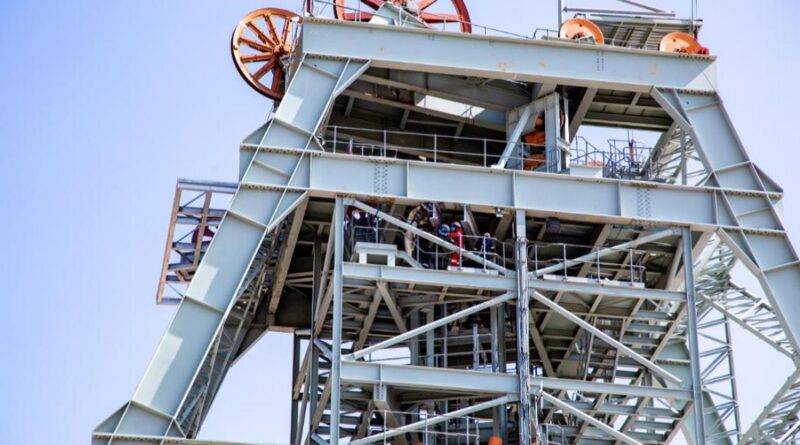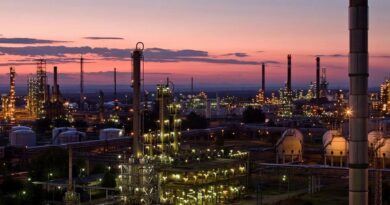Iridium shortage could put a damper on the green hydrogen boom
Demand for the rare platinum group metal, used as a catalyst, is set to soar as the hydrogen industry develops, says Wood Mackenzie. Iridium is one of the rarest naturally occurring elements: it makes up only about 0.00000003% of the weight of the Earth’s crust.
The richest concentrations are found in geological strata laid down when the Chicxulub asteroid hit the earth about 66 million years ago, wiping out the dinosaurs. And although iridium has a range of uses, mostly in high-performance alloys, worldwide production is only about 7 tons per year. So it is potentially a problem that iridium is one of the critical inputs for a key fuel in a low-carbon energy system: green hydrogen, produced by electrolysing water.
Catalysts made from iridium and platinum — today typically 65% iridium and 35% platinum — are essential for what is currently the most popular electrolyser technology, known as a proton exchange membrane (PEM) system.
The energy transition will be built with metals. That is true not only for the obvious high-volume commodities such as steel, copper, and lithium, but also for lesser-known metals such as iridium.
The uncertainties in the demand outlook for iridium are large, reflecting a range of possible outcomes for hydrogen producers’ growth rates and technological choices.
But companies’ plans for green hydrogen projects suggest there will be a steep increase in demand over the coming decade. Meeting just the EU’s goals for green hydrogen production could by 2030 lead to demand for iridium for electrolysers that is several times current global supply.
President Joe Biden last month issued a series of executive orders invoking powers under the 1950 Defense Production Act to stimulate production of clean energy technologies, including electrolysers and PGMs. The administration’s statement argued that support for PGM catalysts “will enhance national and energy security by reducing US reliance on imported fossil fuels, particularly Russia (the world’s second-largest producer of PGMs) and China.”
World iridium supply is currently dominated by South Africa, as a by-product of platinum and palladium production. South Africa accounts for 87% of global iridium production, with a further 8% coming from Zimbabwe and 3% each from Russia and Canada, according to the US Geological Survey. South Africa also has the great bulk of the world’s PGM reserves: about 91%, followed by Russia with about 6%, Zimbabwe with about 2% and the US with about 1%, again according to the USGS.
Dependence on a handful of sources for critical materials for low-carbon energy is different in some respects from dependence on fossil fuels. If the flow of PGMs were cut off, the electrolysers already in operation would be able to continue producing hydrogen. But the green hydrogen industry is aiming to grow rapidly, and a materials supply chain that is rooted almost entirely in southern Africa and Russia looks like a critical vulnerability.
Wood Mackenzie said: “From an energy security perspective, there is certainly the potential for disruption to supplies that would be a constraint on the growth of green hydrogen production.” Wood Mackenzie analysts have been modeling the outlook for PGM demand, to give a sense of the potential impact of the green hydrogen industry. The likely increase in demand for platinum looks manageable, but iridium could be much more of a challenge.
Total world iridium production this year will be about 255,000 ounces, says Roger Emslie, Wood Mackenzie’s principal metals and mining consultant. In a high case scenario based on our forecasts for green hydrogen production and current loadings for catalysts, demand for iridium for PEM electrolysers could be many times that by 2030.
Lower demand for PGM catalysts is possible. Hydrogen producers could shift to increased use of the two alternatives to PEM systems: alkaline and solid oxide electrolysers. Most of the green hydrogen projects that have declared technology choices so far are using either PEM or alkaline systems, with solid oxide accounting for only a small minority, although its share is expected to grow over time. A shift towards alkaline and solid oxide electrolysers would curb demand for catalysts.
Manufacturers may also be able to improve catalyst efficiency, reducing the metal needed for a given volume of hydrogen production. The green hydrogen may grow more slowly than is projected in Wood Mackenzie’s base case forecast. But the market dynamics clearly indicate that iridium is an issue that hydrogen producers, consumers and policymakers need to be aware of.




